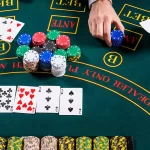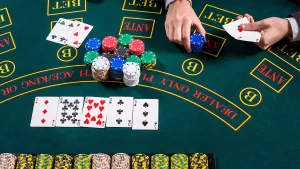Casinos often employ art and sculpture to create an atmosphere of luxury for visitors. Opulent chandeliers and grand sculptures draw them in, making them feel part of something extraordinary.
Casino art serves not only to enhance the gambling experience, but also serves a social function in commemorating important events and figures. Striking a balance between artistic expression and responsible gambling is an integral aspect of casino design.
Modernism
Casinos utilize art and design to create an enticing environment, drawing customers in through both entertainment and allure. By adding distinctive pieces of artwork into their spaces, casino owners can provide visitors with an unforgettable experience and draw more customers in.
Modernism has had an enormous impact on many aspects of culture, from literature and film to music and poetry. The movement encouraged artists to break free from established forms and experiment with novel techniques – leading them down paths such as surrealism, atonality and stream-of-consciousness literature.
Recent years have seen an increased emphasis on sustainability and environmental responsibility within casinos. By employing artwork that promotes eco-friendly practices, casino owners can demonstrate their dedication to environmental concerns while encouraging their visitors to adopt more eco-conscious behaviors.
Art Deco
Casinos have long embraced art as part of their decor, creating stunning scenes to draw art enthusiasts in and enhance the ambiance. Some casinos even offer games inspired by popular artists – you might even find online gambling platforms with art-themed slot games!
Art Deco first emerged at the Paris Expo of 1925 and took its name from that exhibition. This style had profound effects on architecture, furniture design, fashion and textiles alike – with geometric motifs dominating designs that were both bold and sophisticated.
Post-Impressionism
Post-Impressionism emerged in the 1890s after the final Impressionist exhibition and sought to break away from Impressionism’s naturalistic lighting and color preferences. Artists such as Georges Seurat utilized pointillism – using small dabbed of single colors in random positions on an image to produce an optical mixture – as an instrument for posturing its artful vision before its viewers’ eyes.
Artworks by Vincent van Gogh, Paul Gauguin and the Nabis (Pierre Bonnard and Edouard Vuillard) highlighted symbolism as well as flattened forms separated by dark outlines. Their art demonstrated that painting could transcend its traditional function as an interpretation of reality.
Neo-Classicism
Casino culture has inspired artists from various disciplines. Fashion designers have designed runway looks inspired by its lavishness, while jewelry with card motif embellishments add an unexpectedly whimsical touch.
Non-fungible art (NFT) can add an unexpectedly engaging gaming experience for casino guests. Studies have demonstrated its ability to evoke positive feelings and encourage longer play, making it a potent marketing tool for casinos.
In the seventeenth, eighteenth, and nineteenth centuries there was an increased appreciation of all things ancient that led to a period known as Neo-Classicism. Chambers adapted his Maratta frame accordingly by adding fluted top moulding featuring imbricated bay leaves and foliate decoration on its fluted top moulding.
Pop Art
Casino venues and games stand as testaments to art’s impactful ability to captivate audiences. Renowned artists have captured both the emotions and allure of gambling through works such as Edvard Munch’s “The Scream” or Andy Warhol’s depictions of casino table games.
Rapid social, cultural and economic changes at the turn of the 19th and 20th centuries had an immediate effect on sculpture’s form, practice and purpose. Iconic movements like Constructivism, dematerialization practices from 1960s-1970s and Brazilian artist’s kinesthetic and participatory approach opened up new fields for artistic creation.
Abstract Art
Abstract art transcends reality by shifting away from realistic depictions in favor of forms and colors that elicit emotions and sensations that cannot be described directly. From Jackson Pollock’s drip paintings to Wassily Kandinsky’s bright compositions, abstraction requires an open mind and vivid imagination to fully appreciate.
Casinos have long been used as platforms to showcase fine art to create an atmosphere of luxury and allure, reflecting society’s views about risk and reward. Their juxtaposition between glamour and dark realities of gambling addiction fosters an important societal dialogue about ethics and responsibility.
Digital Art
As technology develops, so too do the possibilities of sculptural practice. No longer limited to stone, clay, bone, tusks, or metals as the mediums for sculpture making; sculpture now extends far beyond physical objects into virtual and augmented realities spaces.
Casino-themed digital art combines the excitement and anticipation associated with gambling with iconic images such as slot machines, dice and playing cards to evoke familiarity and anticipation among collectors. Attractive artwork on casino websites stands out among others by making an impressionful statement about them and draws players in.












More Stories
How to Manage Your Bankroll Effectively – A Key to Long-Term Gambling Success
Exploring the Intriguing World of Casino Myths and Legends
Top 10 Casino Movies of All Time